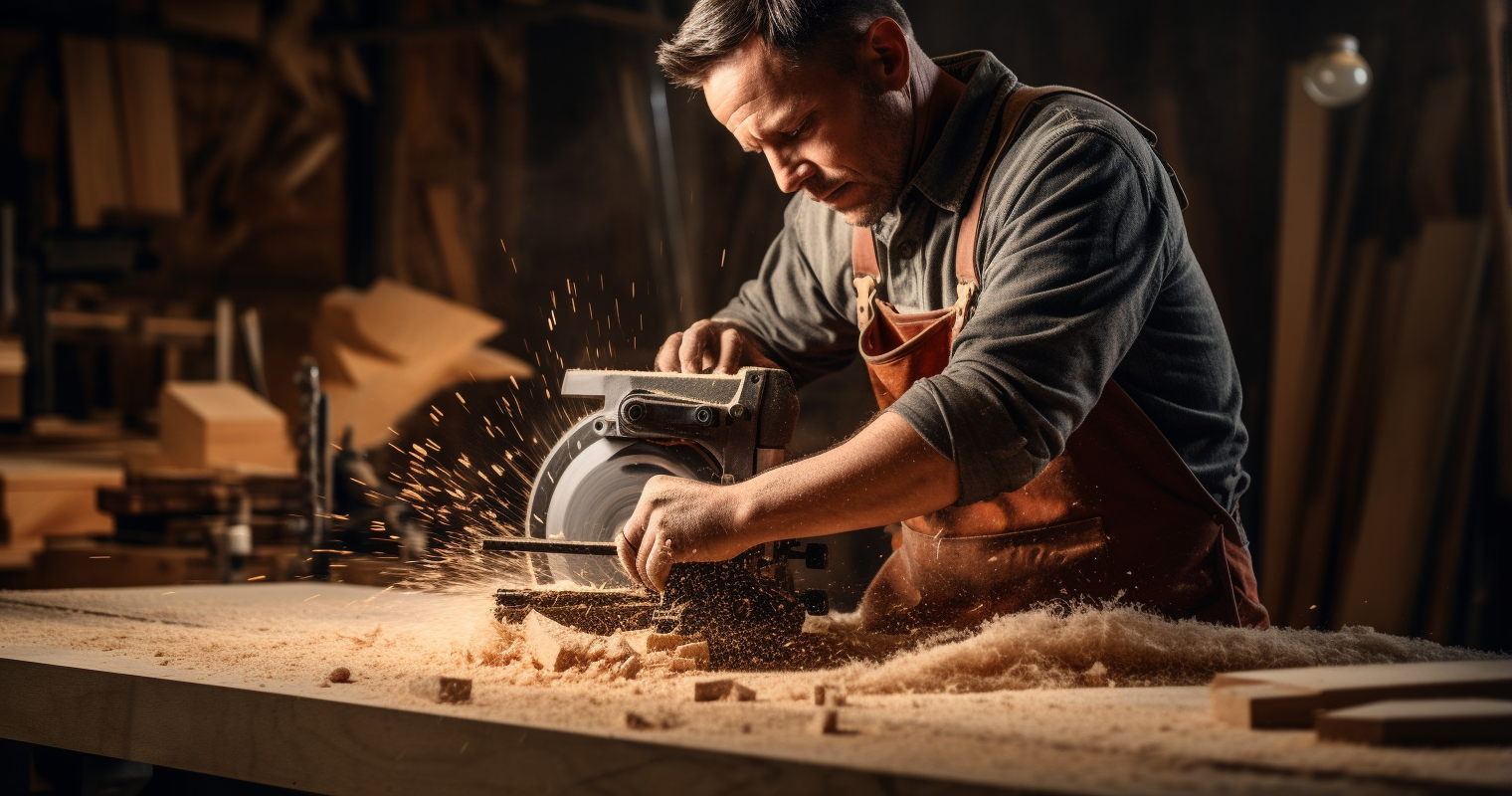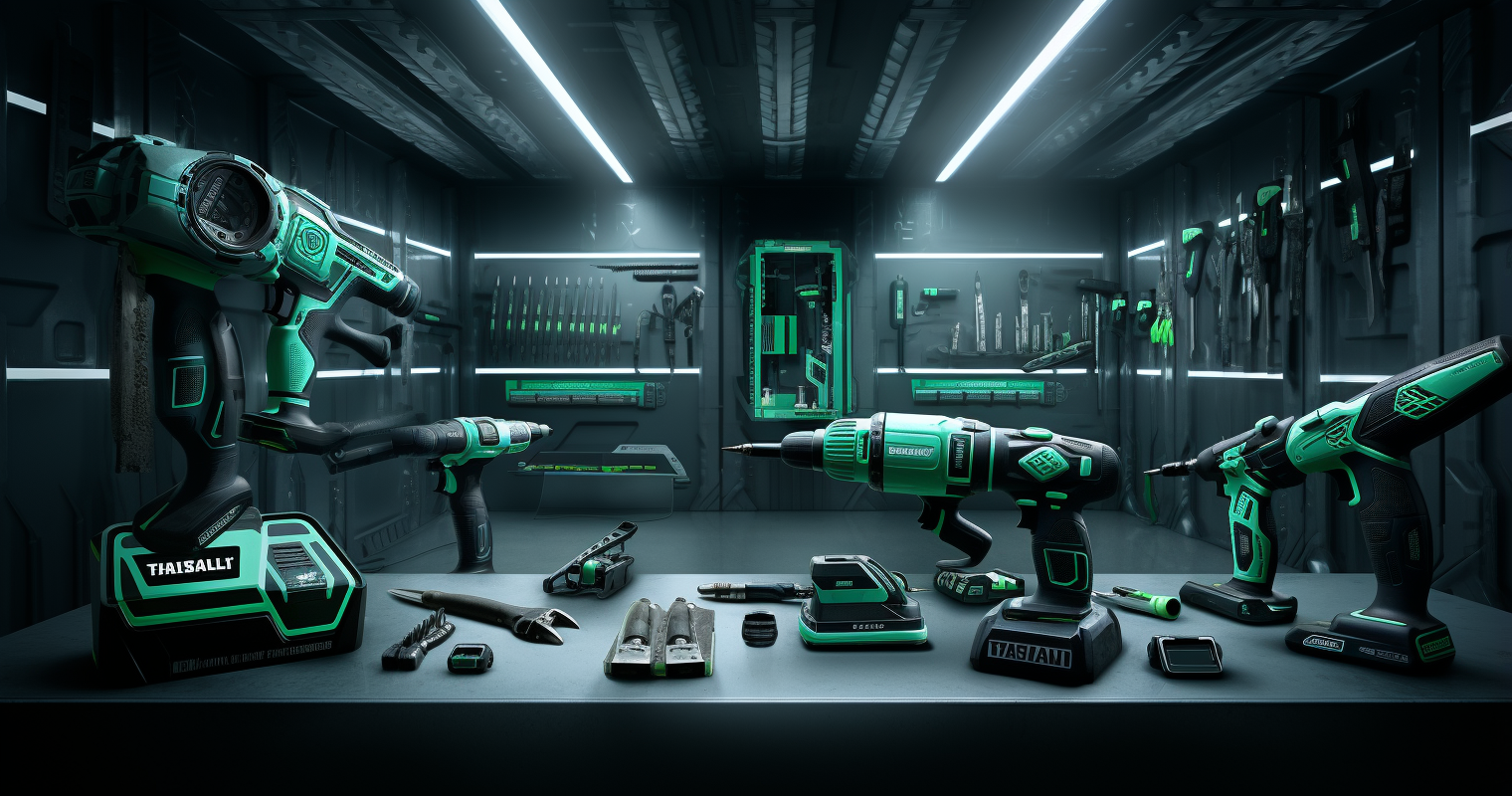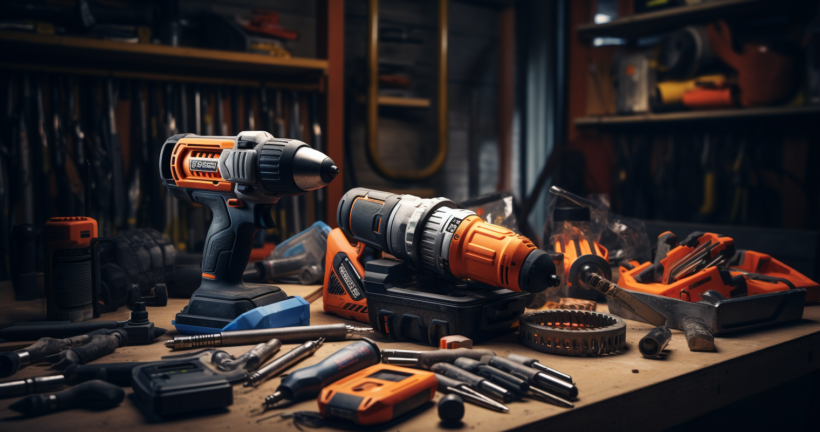In the world of DIY and professional construction, power tools have become indispensable. But have you ever paused to wonder, How Many Amps Do Power Tools Use? It’s not just a technical query; understanding the amperage of your tools can influence safety, efficiency, and even the longevity of the device. According to a recent survey, 70% of tool users are unaware of their tool’s power consumption.
Understanding Power Tool Amperage

In the electrifying world of power tools, one term that often sparks curiosity is amperage. But what does it really mean? At its core, amperage, or current, is the flow of electric charge. For power tools, it’s akin to the bloodstream of the device, determining how much “juice” it gets.
Now, you might wonder, why should I care about the amps? Well, the amperage of a tool directly impacts its performance and longevity. A tool with higher amperage can often deliver more power, but it also demands more from its power source. This is where the relationship between volts, watts, and amps comes into play. Think of it as a dance. Volts are the dance floor size, watts are the party’s energy, and amps? They’re the number of dancers. All three need to be in harmony for the party (or the tool) to run smoothly.
Drills and Their Power Consumption
Drills, the poster child of power tools, are a perfect example to delve deeper into this topic. Whether you’re hanging a picture frame or building a deck, drills are indispensable. But have you ever paused to think about their power consumption?
Corded drills typically have an amperage range between 5 to 10 amps. On the other hand, cordless drills don’t have a direct amperage rating for the tool itself but rather for their batteries, indicating how long they can provide power. Factors like the drill’s design, battery efficiency, and the task at hand can influence its power consumption.
But it’s not all about raw power. The best drills strike a balance between power and efficiency. After all, what’s the use of a drill that can bore through concrete if it drains its battery in minutes? This balance ensures that the drill performs optimally without compromising its lifespan.
To get the most out of your drill, or any power tool for that matter, understanding its power consumption is crucial. It not only helps in ensuring efficient operation but also in prolonging the tool’s life. So, the next time you pick up a drill, remember, it’s not just about power; it’s about the right balance of power.
For a deeper dive into the world of power tools and their power needs, check out Power Tools: How Much Power Do They Need?. And if you’re curious about other tools and their amperage, our guide on Types of Power Tools is a must-read.
Saws and Their Power Needs

| Consideration | Description |
|---|---|
| Type of Work | Determine the tasks you’ll perform with the tool to choose the appropriate power source for efficiency. |
| Frequency of Use | For frequent use, consider tools with compatible power sources that won’t lead to excessive wear. |
| Budget | Balancing initial cost with long-term operating costs based on the tool’s power source is crucial. |
| Safety and Weight | High-amperage tools might offer more power but can be heavier and may require specific electrical setups. |
From the rustic hand saws our grandfathers used to the high-tech, laser-guided miter saws of today, they’ve come a long way. But with great power (tools) comes great… electricity consumption. So, how many amps do power tools use, especially our beloved saws?
Different saws have different appetites. For instance, a standard circular saw might chomp down on 13-15 amps, while a beefy table saw could demand a whopping 15-20 amps. The evolution of saws has not only brought precision but also an increasing hunger for power. Remember the days when saws were just manual? Now, they’re like the smartphones of the woodworking world, always craving for more juice.
But here’s a twist in the tale: corded vs. cordless saws. While corded saws generally have a consistent amperage requirement, cordless ones depend on their battery specifications. However, the convenience of cordless often comes with a trade-off in raw power.
Air Compressors and Power Consumption
Switching gears, let’s inflate our knowledge about air compressors. These devices are the unsung heroes in many workshops, powering everything from nail guns to paint sprayers. But how power-hungry are they?
Understanding the power needs of air compressors can be a bit tricky. Typically, a small home compressor might use about 10-15 amps, while larger, industrial-grade ones could require 20 amps or more. But here’s a fun fact: to calculate the wattage of an air compressor, you can multiply the voltage by the amperage. So, a 120V compressor using 10 amps would consume 1200 watts.
Voltage and amperage are like the bread and butter of air compressors. While voltage determines the pressure, amperage is all about the flow rate. Together, they ensure your compressor runs efficiently without blowing a fuse, literally.
In the world of power tools, understanding their power consumption is not just about saving on electricity bills. It’s about ensuring safety, prolonging tool life, and, most importantly, bragging rights at the next BBQ. After all, who doesn’t love a good power tool chat?
For those itching to dive deeper into the world of hand tools, our guide on The Basics on Multi-Bit Screwdriver: Hand Tools DIY is a treasure trove of information. And if you’re setting up a workshop, don’t miss out on these Critical questions about workshop wiring to ensure you’re always powered up safely.
The Rise of Battery-Powered Tools

Remember the days when you’d be in the middle of a project, and suddenly your corded drill’s cable would get tangled, or worse, not reach the spot you needed? Ah, memories. But thanks to the marvels of modern technology, those days are long gone. Battery technology has revolutionized power tools in ways our granddads could only dream of.
The advantages of cordless tools are numerous. For starters, they offer freedom of movement, making it easier to work in tight spaces or on the go. But here’s where it gets interesting: in terms of amperage and efficiency, battery-powered tools often have a more consistent power output. No more voltage drops or power surges, just smooth operation. And with advancements in battery tech, we’re seeing tools that can run longer and charge faster.
But what does the future hold? Well, if predictions are anything to go by, we’re on the cusp of even more groundbreaking innovations in battery-powered tool technology. Think tools that charge in minutes, batteries that last days, and maybe, just maybe, a hammer that doesn’t miss the nail. (Okay, that last one might be wishful thinking.)
Making an Informed Choice: Power Source Considerations
| Aspect | Cordless Tools | Corded Tools |
|---|---|---|
| Mobility | Freedom to move around without cords; ideal for tight spaces. | Limited mobility due to cord; better suited for stationary tasks. |
| Power Consistency | Consistent power output; less affected by voltage drops. | Voltage drops or surges can affect performance. |
| Battery Performance | Battery life varies; modern batteries offer longer runtimes. | Unlimited runtime; depends on power source. |
| Weight and Ergonomics | Generally lighter and more ergonomic due to absence of cord. | Heavier due to cord; may require extra effort to handle. |
| Power Output | Generally lower power output compared to high-amperage corded tools. | Higher amperage allows for more power output. |
Choosing a power tool isn’t just about picking the shiniest one on the shelf. It’s about understanding what’s under the hood, or in this case, inside the handle. Factors to consider when choosing a power source for your tools include the type of work you’ll be doing, how often you’ll use the tool, and of course, your budget.
But here’s the kicker: understanding tool amperage is crucial for both safety and efficiency. Ever wondered why some tools heat up faster than others? Or why some seem to lack the punch you expected? The answer often lies in their amperage. Tools with higher amperage ratings generally deliver more power but can also be heavier and may require special electrical setups.
Lastly, a well-maintained tool is a happy tool. Regular maintenance ensures optimal power consumption and prolongs the life of your tools. Clean them, store them properly, and give them the occasional pep talk (okay, maybe not the last one).
For those keen on diving deeper into the world of power tools, our guide on How to Use a Belt Sander is a must-read. And if you’re curious about the nitty-gritty of power ratings, this discussion on Understanding the amp rating on your corded power tool offers some enlightening insights.
Frequently Asked Questions
How is the amperage of power tools determined?
Power tools have their amperage clearly mentioned on the label or user manual. Manufacturers determine this based on the tool’s power requirements and design.
Why is it essential to know the amps of a power tool?
Knowing the amps of a power tool ensures safe and efficient usage. It helps in preventing circuit overloads and understanding the tool’s power needs.
Do cordless tools also have an amperage rating?
Yes, cordless tools have an amperage rating for their batteries, indicating the battery’s capacity and how long it can provide power.
How do amps relate to the performance of the tool?
Higher amperage usually means more power. However, it’s a balance between amps, volts, and the tool’s design that determines its overall performance.
Can I use a tool with higher amps than recommended on my circuit?
It’s risky. Using a tool with higher amps than what your circuit can handle can lead to overloading and potential electrical hazards.
Are there tools available that use low amps but deliver high performance?
Yes, advancements in technology and design have led to tools that are energy efficient, using lower amps but still delivering high performance.
Conclusion
Understanding How Many Amps Do Power Tools Use is more than a mere technicality. It’s about ensuring safety, optimizing performance, and making informed decisions when purchasing or using these tools. As the world of power tools continues to evolve, staying informed will not only make your tasks easier but also safer. So, the next time you pick up that drill or saw, remember the importance of its amperage.
Thank you for reading!
